Wolverine
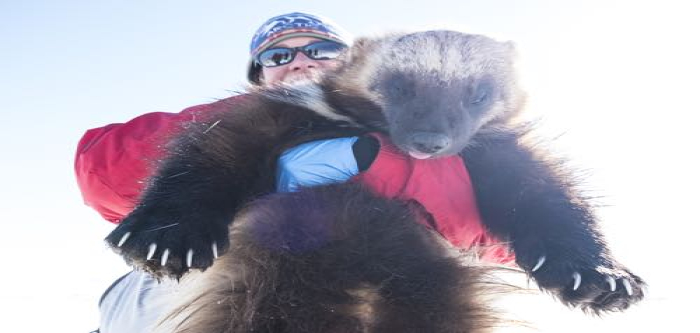 Me holding the wolverine. Photo by Peter Mather.
Me holding the wolverine. Photo by Peter Mather.
Today we caught a wolverine. And when I say "we", I mean Tom and Matt, Team Wolverine. When I got to breakfast, Emma asked what our plans were for the day and Tom, Matt, Emma and Peter were looking at me. Intently. I was trying to figure out what was happening in my sleepy state, and then it dawned on me. Tom had gotten an email from a trap saying that something was inside! I've mentioned Team Wolverine before, and they're doing some cool work to try to find out how wolverines are using snow and snow holes. Their research is part of the Arctic Beringia Project through the Wildlife Conservation Society, and I highly recommend you check them out to learn more at https://arcticberingia.wordpress.com/category/wolverines/. Cory shares the Winter Lab at Toolik with the wolverine team, and acts as a collaborator, offering advice with their use of accelerometers, as he uses them on the squirrels as well.
When Cory got to breakfast a few minutes later, we checked with him to see if Cory and I could accompany the others on the trip out to the trap. We could! It took a little while to get ready, and I wasn't sure I had enough clothes to keep me properly warm for a 30 minute snowmachine ride out to the trap that was 10 miles away. Everyone chipped in and helped out. Tom brought me a pair of winter boots to try and an insulated bib to wear. Brie brought me another pair of winter boots that fit better with all my socks. Emma gave me a fleece neck warmer/hood and warm mittens, and Matt gave me some goggles, which Cory later swapped me out for a helmet. Once I put everything on, I felt like an enormous marshmallow. Top layer included my merino wool shirt, a fleece jacket, a down jacket and the big coat I've been wearing. Bottom later included long underwear, fleece pants, rain pants and the insulated bib. A pair of liner socks, two pairs of wool socks, insulated boots, the fleece hood, a balaclava, mittens and a helmet rounded things out. Oh man, I could barely move, and I was sweating before I even left the building. But, this gave me a new understanding and appreciation of how animals can survive and stay warm in the winter in the Arctic. It was far from the coldest morning, and later, the day was quite warm (in fact, it was the only day that's reached above the freezing point!), but these clothes really kept me warm, even as we moved through the -8˚C/17˚F air.
I rode behind Cory on the snowmachine, and my sunglasses and helmet were foggy instantly. I could barely see to appreciate the gorgeous views and caribou we saw on the way out. I lifted the visor halfway through and was warm enough like that and could see better.
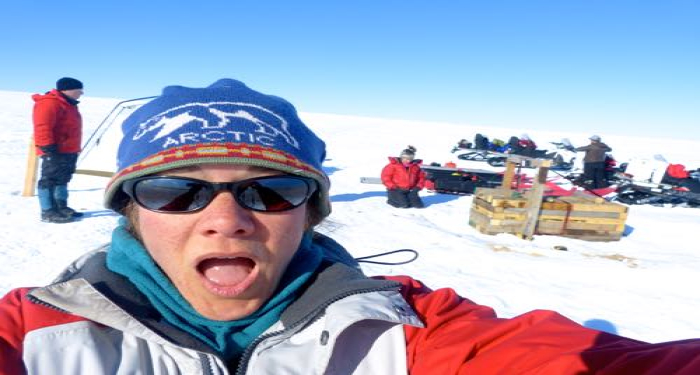 Amazing to be here.
Amazing to be here.
When we arrived, the trap was just sitting there, a large wooden box on the tundra. It's almost crazy that any animal would get inside, as it doesn't blend in with the surroundings and they have to go in from the top. But there was meat inside, and around 3am, this fellow walked in. Tom and Matt confirmed it was a wolverine and Tom allowed us to look inside briefly for a photo, though mine did not work out well.
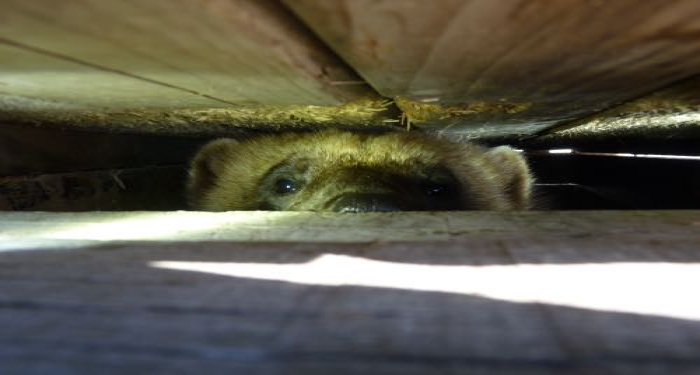 A peek inside the trap. Photo by Emma Boone.
A peek inside the trap. Photo by Emma Boone.
Tom then explained how everything would work. We should speak very softly when we did need to speak, to minimize any stress for the animal. They would inject the wolverine with telazol as an anesthetic and leave him for five or ten minutes until he was asleep. Then they would take him inside a tent they had quickly set up with a propane heater to keep it warm and comfortable, and fit him with a GPS collar. They would also take measurements of the wolverine as well. They wanted to do everything as quickly and calmly as possible so that they would be done when the wolverine started to come around.
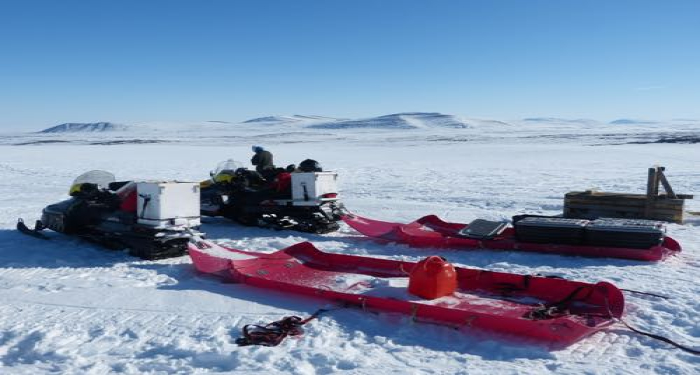 Team wolverine uses sleds with the snowmachines to transport all of their gear into the field.
Team wolverine uses sleds with the snowmachines to transport all of their gear into the field.
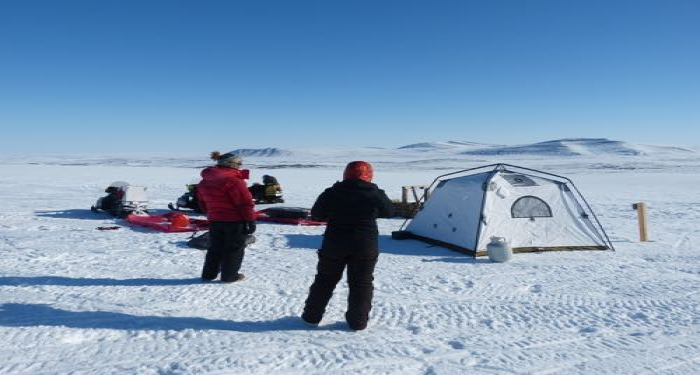 A look at the tent set-up and working area.
A look at the tent set-up and working area.
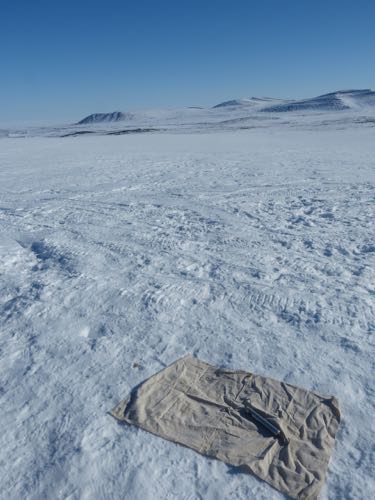 The wolverine will be wrapped in this cloth and weighed with this scale.
The wolverine will be wrapped in this cloth and weighed with this scale.
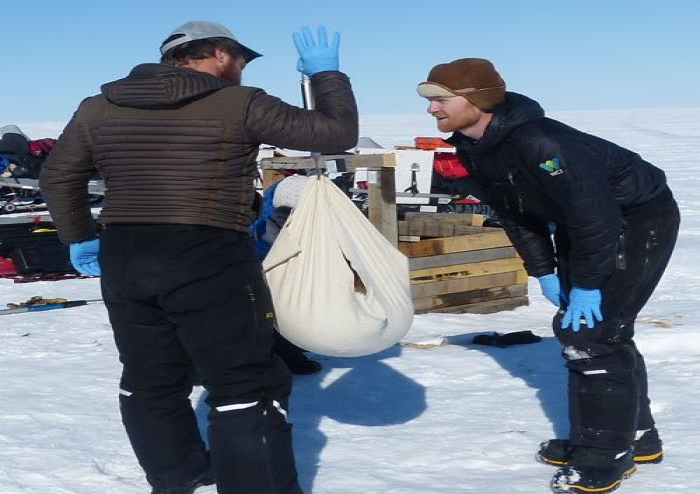 Matt and Tom weight the wolverine.
Matt and Tom weight the wolverine.
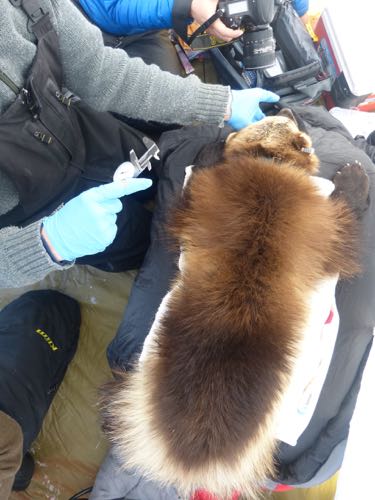 Tom takes measurements of the wolverine inside the tent.
Tom takes measurements of the wolverine inside the tent.
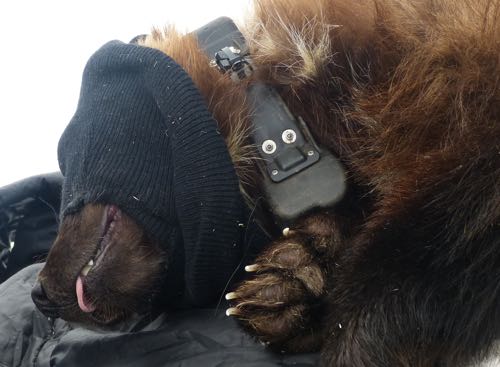 The collar tracks the wolverine movement using GPS and transmits the signal back to Tom. The wolverine has his eyes covered to provide less sensory input while he is being processed.
The collar tracks the wolverine movement using GPS and transmits the signal back to Tom. The wolverine has his eyes covered to provide less sensory input while he is being processed.
We were allowed to hold the animal briefly, and he was so much larger and heavier than I'd expected. He weighed 14.5kg/31.9 lbs. He took two deep breaths while I held him, and it was very intense. When I passed him to Cory, I realized my hands were a little shaky from all the adrenaline.
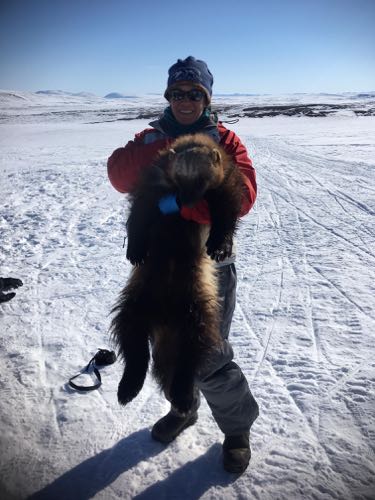 Me holding the wolverine. Photo by Kim Layton.
Me holding the wolverine. Photo by Kim Layton.
They worked on him in the tent, and we stayed outside so that they could get all of their scientific measurements and data. We didn't go inside the tent, but we could watch from afar and take photos through a little chimney hole in the tent. We then had a few minutes to look at him again until he woke up, which he did quite quickly once they were done working. When he started to move his head a bit, Tom and Matt placed him back in the trap, a safe place to wake up.
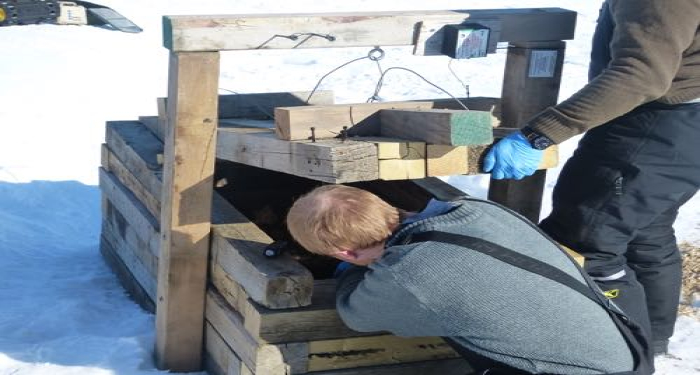 Tom is putting the wolverine back inside the box as a safe place to wake up
Tom is putting the wolverine back inside the box as a safe place to wake up
Shortly afterwards we could hear him moving around, and not long after, Tom opened the trap. He said it can take 2-7 hours for this process depending on the wolverine, but this wolverine recovered very quickly. He was out of the box ten seconds after Tom opened it, which was two hours or less from the time we arrived.
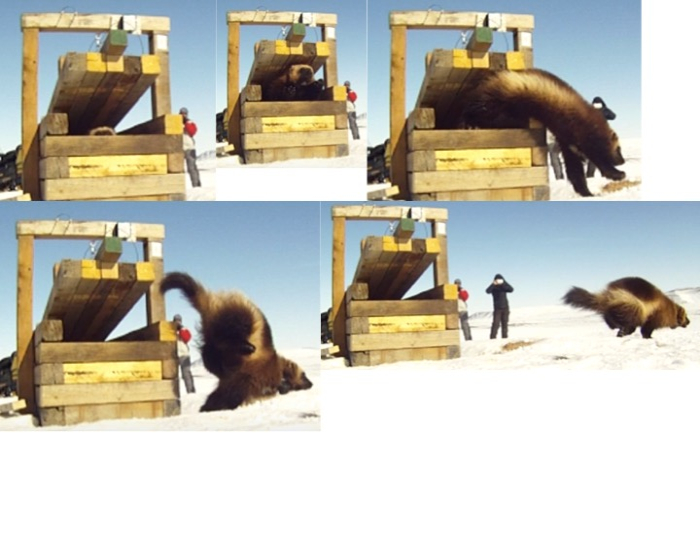 Wolverine release screen grab from my GoPro.
Wolverine release screen grab from my GoPro.
He took off with good speed and we could see him for a long way, as he was running across snow on the open tundra.
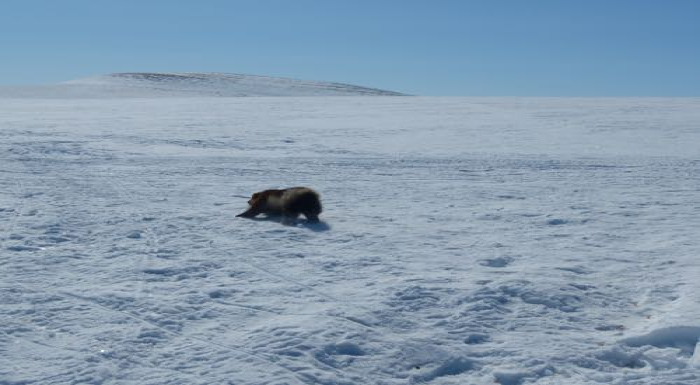 The wolverine leaving the makeshift camp.
The wolverine leaving the makeshift camp.
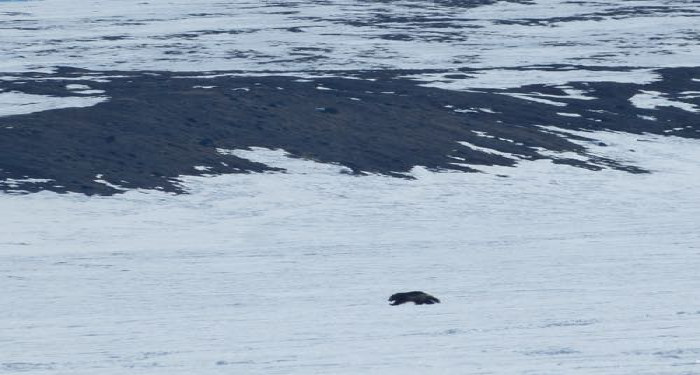 Wolverine running across the tundra.
Wolverine running across the tundra.
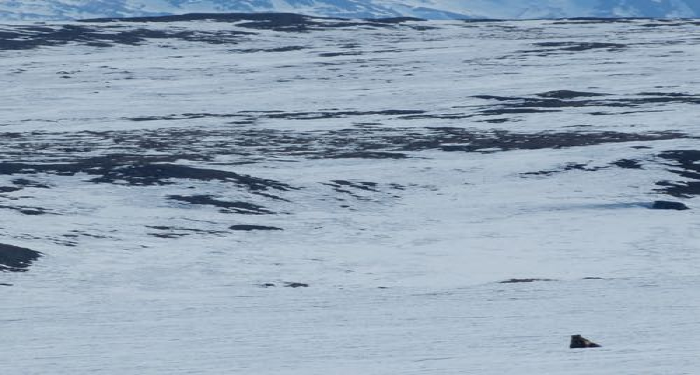 The wolverine has stopped running and is taking a look back.
The wolverine has stopped running and is taking a look back.
It was a really special event to witness, and I'm extremely grateful to Tom and Matt for inviting Cory and I along, and for waiting for us to get ready. I saw backcountry scenery I would never have seen without this trip, and I was able to see and handle a live wolverine, the last they would catch this season. It was ever so slightly more dramatic than the squirrel releases we did just after lunch.
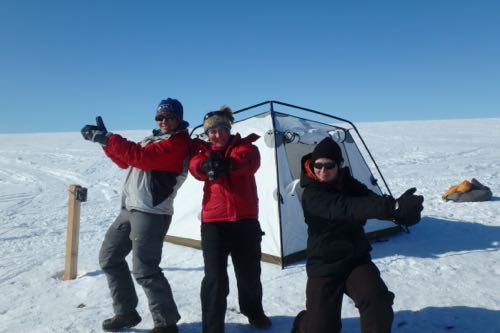 Me, Emma and Kim did an Arctic photo shoot as we waited.
Me, Emma and Kim did an Arctic photo shoot as we waited.
Thanks to Team Wolverine for letting me into their world and research, and to Tom, Matt, Emma and Brie who made me not freezing to death on a snowmachine a reality. And to Kim, Cory and Emma, who all helped me put on or take off my helmet today, which I never got the hang of. Toolik is a special place in its own right, but the people who live and work here make it all the more special. I feel like I had several moms today, and it did not go unappreciated.


Comments
Add new comment